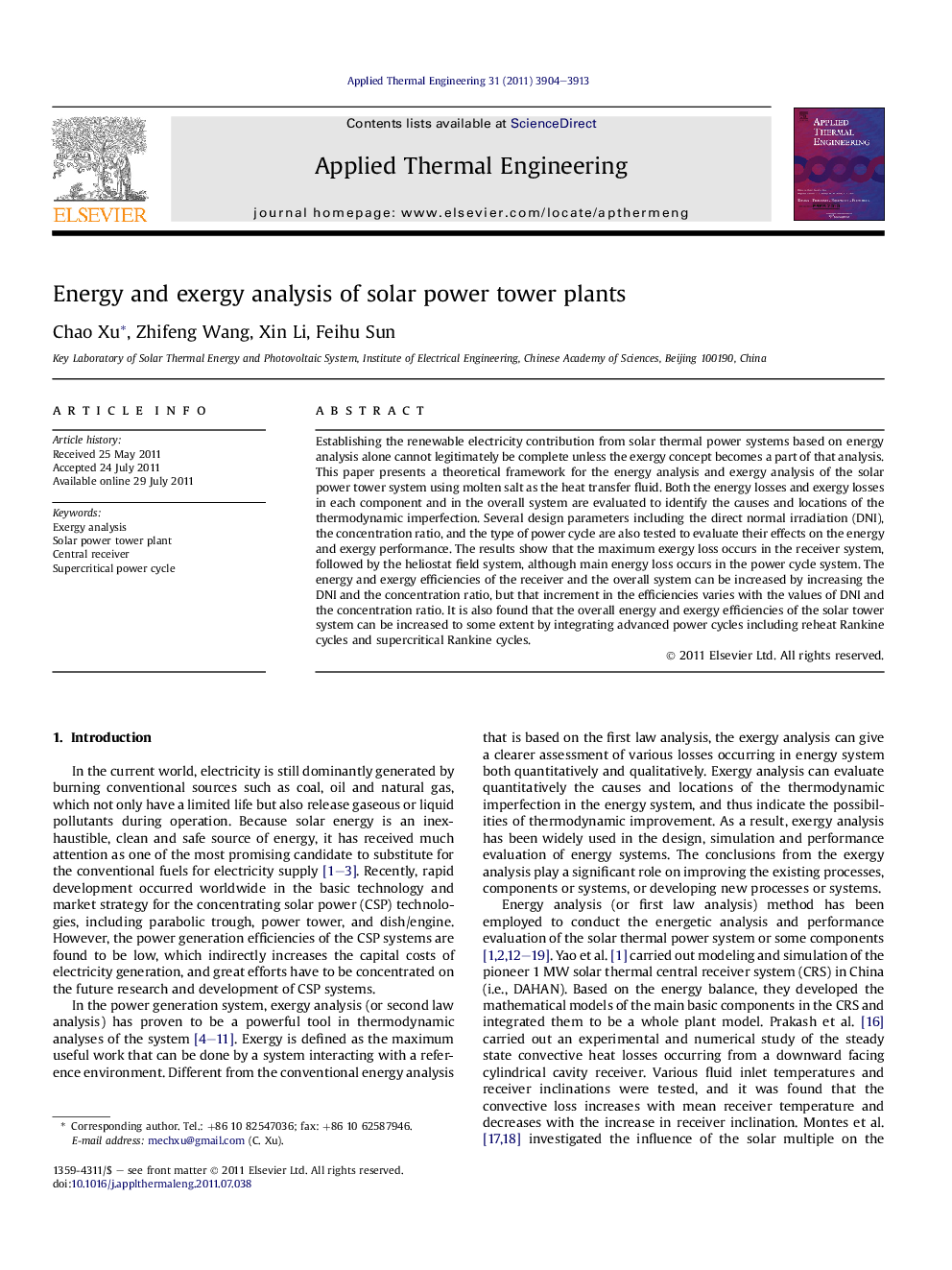| کد مقاله | کد نشریه | سال انتشار | مقاله انگلیسی | نسخه تمام متن |
|---|---|---|---|---|
| 647614 | 1457186 | 2011 | 10 صفحه PDF | دانلود رایگان |

Establishing the renewable electricity contribution from solar thermal power systems based on energy analysis alone cannot legitimately be complete unless the exergy concept becomes a part of that analysis. This paper presents a theoretical framework for the energy analysis and exergy analysis of the solar power tower system using molten salt as the heat transfer fluid. Both the energy losses and exergy losses in each component and in the overall system are evaluated to identify the causes and locations of the thermodynamic imperfection. Several design parameters including the direct normal irradiation (DNI), the concentration ratio, and the type of power cycle are also tested to evaluate their effects on the energy and exergy performance. The results show that the maximum exergy loss occurs in the receiver system, followed by the heliostat field system, although main energy loss occurs in the power cycle system. The energy and exergy efficiencies of the receiver and the overall system can be increased by increasing the DNI and the concentration ratio, but that increment in the efficiencies varies with the values of DNI and the concentration ratio. It is also found that the overall energy and exergy efficiencies of the solar tower system can be increased to some extent by integrating advanced power cycles including reheat Rankine cycles and supercritical Rankine cycles.
► We presented a theoretical framework for the energy and exergy analysis of the solar tower system.
► We tested the effects of several design parameters on the energy and exergy performance.
► The maximum exergy loss occurs in the receiver system, followed by the heliostat field system.
► Integrating advanced power cycles leads to increases in the overall energy and exergy efficiencies.
Journal: Applied Thermal Engineering - Volume 31, Issues 17–18, December 2011, Pages 3904–3913